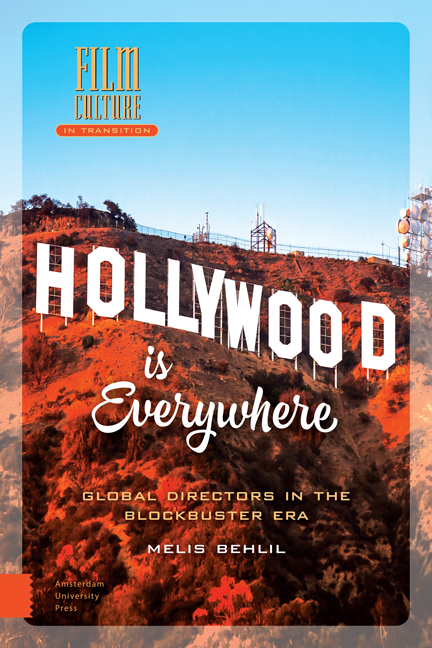Book contents
- Frontmatter
- Dedication
- Contents
- Acknowledgments
- Introduction: Hello Hollywood
- 1 Defining Hollywood
- 2 Cultural Work in a Globalizing World
- 3 Histories and Geographies of Global Directors
- 4 A View to a Franchise: James Bond
- 5 “Once More with the Volume Up”: Auto-remakes
- 6 I Want My MTV: Advertising and Music Videos
- 7 Conclusion: “Everywhere is Hollywood”
- Notes
- Bibliography
- List of Directors
- Index of Film Titles
- Index of Names
- Index of Subjects
- Film Culture in Transition
5 - “Once More with the Volume Up”: Auto-remakes
Published online by Cambridge University Press: 10 December 2020
- Frontmatter
- Dedication
- Contents
- Acknowledgments
- Introduction: Hello Hollywood
- 1 Defining Hollywood
- 2 Cultural Work in a Globalizing World
- 3 Histories and Geographies of Global Directors
- 4 A View to a Franchise: James Bond
- 5 “Once More with the Volume Up”: Auto-remakes
- 6 I Want My MTV: Advertising and Music Videos
- 7 Conclusion: “Everywhere is Hollywood”
- Notes
- Bibliography
- List of Directors
- Index of Film Titles
- Index of Names
- Index of Subjects
- Film Culture in Transition
Summary
Jean Renoir famously (and allegedly) said: “A director makes only one movie in his life. Then he breaks it into pieces and makes it again.” While he may have been referring to auteurs who dwell on particular themes and employ a consistent style within their oeuvre, this is a literal description of the practice of certain filmmakers who have remade their own works. This practice of remaking one's own film, labeled the “auto-remake” by Michel Serceau and Daniel Protopopoff (1989), has been a sporadic but steady feature of remakes in general. In this chapter, I consider global directors who have remade their films within the Hollywood context. Every single one of these remakes also marks its director's first collaboration with a studio, possibly as a stepping-stone for a Hollywood career. The auto-remake provides a way into the global network, as it is based on proven material. Whether they are by the same director or not, Hollywood remakes are almost without exception bigger and louder. As Cameron Crowe commented on VANILLA SKY, his own remake of Alejandro Amenábar's ABRE LOS OJOS / OPEN YOUR EYES (1997), the original is acoustic, whereas the remake is the rock cover version at full volume.
Although remaking is as old as filmmaking itself, scholarship on remakes is significantly more recent. Following a few general surveys, numerous studies have taken theoretical approaches to remakes, while others have focused on remakes with specific national or generic origins. Robert Eberwein suggests a preliminary taxonomy of the different kinds of remakes (1998). Across fifteen categories, he takes into account a film’s origins, cultural setting, and genre, as well as other factors that may differ between the original and the remake. The first category is concerned with silent films, and one of the sub-categories is “a silent film remade by the same director as a sound film.” The second category encompasses sound film auto-remakes of three types: a film remade by the same director (a) in the same country, (b) in a different country in the same language, or (c) in a different country in a different language.
Remakes became common in the late 1920s, with the advent of sound. Since silent films lacked recorded dialogue, they were easily screened in different countries.
- Type
- Chapter
- Information
- Hollywood is EverywhereGlobal Directors in the Blockbuster Era, pp. 97 - 110Publisher: Amsterdam University PressPrint publication year: 2016



